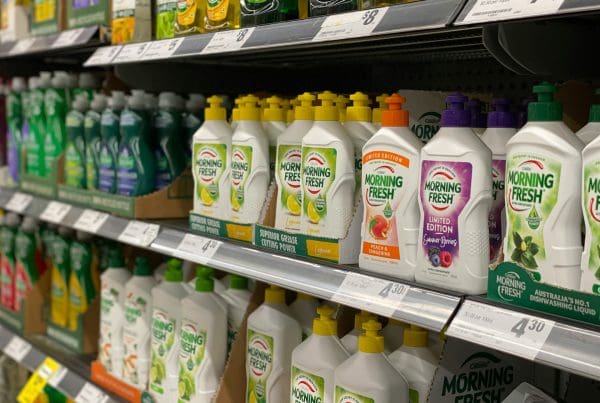Last Updated on 10/04/2025 by Jill Dumas
Hidden Xenoestrogens in Your Food, Water, and Home
Today we continue on about hidden xenoestrogens in your food, water and home. In our previous post ‘Xenoestrogens: Hidden Hormone Disruptors Affecting Your Health and Simple Swaps for a Toxic-Free Life‘, we explored xenoestrogens and uncovered the hidden dangers lurking in our cleaning and beauty routines. We learned how these foreign estrogen mimics can disrupt our delicate hormonal balance and explored simple swaps for safer alternatives. But the truth is, our exposure to these endocrine-disrupting chemicals extends far beyond the products we apply to our skin or use to clean our homes. In this second installment, we’ll delve into other significant sources of xenoestrogens in our daily environment, focusing on what we eat, drink, and the materials that surround us. Understanding these less obvious pathways is crucial for a comprehensive approach to protecting your hormonal health.
The Plate Problem: Xenoestrogens in Our Food Supply
What we eat plays a fundamental role in our overall well-being, and unfortunately, our food supply can be a significant source of xenoestrogen exposure. This can occur through various means:
- Pesticide Residues: Conventional agriculture often relies on pesticides, herbicides, and fungicides, many of which have been identified as endocrine disruptors. These chemicals can leave residues on fruits, vegetables, and grains that we then ingest. Organochlorine pesticides, although largely banned in many countries, are persistent in the environment and can still be found in food.
- Growth Hormones in Animal Products: In some regions, growth hormones are administered to livestock to promote faster growth and increased milk production. Consuming meat and dairy products from animals treated with these hormones can potentially expose us to xenoestrogenic compounds.
- Processed Foods and Additives: Many processed foods contain artificial additives, preservatives, and flavorings that may have endocrine-disrupting effects. Additionally, the packaging of processed foods, often made from plastics containing phthalates and BPA, can leach these chemicals into our food, especially when heated.
- Soya Controversies: Soybeans contain isoflavones, which are phytoestrogens – naturally occurring plant compounds that can also bind to oestrogen receptors. While some studies suggest potential benefits of moderate soya consumption, high intake, particularly of processed soya products, has raised concerns about its potential oestrogenic effects in sensitive individuals. It’s important to choose whole, minimally processed soy products like edamame and tempeh in moderation and as always, comes down to the individual as to the optimal intake.
The Water We Drink: A Hidden Source of Exposure
The water we drink, often taken for granted, can also harbor xenoestrogens and other endocrine-disrupting chemicals:
- Industrial Runoff and Pollution: Industrial activities can release a variety of chemicals into our waterways, including pesticides, herbicides, and industrial byproducts that can act as hormone disruptors.
- Pharmaceutical Contamination: Trace amounts of pharmaceuticals, including synthetic oestrogens from birth control pills, can find their way into our water systems through wastewater treatment plants. While concentrations are typically low, the long-term effects of this widespread exposure are still being studied.
- Plastic Water Bottles: Many plastic water bottles are made from materials that can leach chemicals like BPA and phthalates into the water, especially when exposed to heat or left for extended periods.
Our Homes and Beyond: Ubiquitous Environmental Xenoestrogens
Beyond food and water, our homes and the wider environment can expose us to xenoestrogens through various sources:
- Plastics Everywhere: Plastics are pervasive in our modern lives, from food containers and storage to toys and electronics. Many plastics contain phthalates, BPA, and other chemicals that can leach out, particularly when heated, scratched, or in contact with fatty foods.
- Flame Retardants: These chemicals are commonly found in furniture, mattresses, electronics, and even some clothing to reduce flammability. Many flame retardants are known endocrine disruptors and can accumulate in our bodies over time through dust inhalation and skin contact.
- PCBs (Polychlorinated Biphenyls): Although largely banned, PCBs are persistent environmental pollutants that were widely used in industrial applications. They can still be found in soil, water, and the food chain, and are known endocrine disruptors.
- Building Materials and Furnishings: Certain building materials, paints, adhesives, and furniture finishes can release volatile organic compounds (VOCs), some of which have endocrine-disrupting properties.
Taking Control: Strategies for Minimising Exposure
While it’s impossible to completely eliminate xenoestrogen exposure in our modern world, we can take proactive steps to significantly reduce our burden:
- Choose Organic and Local Foods: Opting for organic produce minimises your exposure to pesticide residues. Supporting local farmers who often use more sustainable practices can also be beneficial. Check out the EWG – Environmental Working Group – here for their yearly ‘Clean 15’ and ‘Dirty Dozen’ list of the top fruit & veg to buy organic.
- Prioritise Whole, Unprocessed Foods: Reduce your intake of processed foods with artificial additives and excessive packaging. Focus on whole, nutrient-dense foods.
- Choose Grass-Fed and Hormone-Free Animal Products: When consuming meat and dairy, opt for sources that are organic, certified grass-fed and hormone-free.
- Filter Your Water: Invest in a high-quality water filter that can remove chlorine, pesticides, heavy metals, and pharmaceutical residues. Consider options like activated carbon filters, distilled water (add back in minerals) or reverse osmosis systems. Avoid storing water in plastic bottles, especially in warm conditions. Use glass or stainless steel alternatives.
- Reduce Plastic Use: Opt for glass or stainless steel containers for food storage and drinks. Avoid heating food in plastic containers in the microwave. Choose toys and other household items made from natural materials like wood or glass whenever possible.
- Be Mindful of Home Furnishings: When purchasing new furniture or mattresses, look for options made with natural materials and without added flame retardants. Ensure good ventilation in your home to minimise exposure to VOCs.
- Dust Regularly: Dust can accumulate endocrine-disrupting chemicals like flame retardants and PCBs. Vacuum and dust your home regularly with a damp cloth.
- Wash Fruits and Vegetables Thoroughly: Rinse all produce thoroughly under running water at a minimum, even better let them soak in some water and baking soda for 15-20 mins to remove potential pesticide residues. Peeling fruits and vegetables can also help, although then you remove some of the nutrients and fibre.
Understanding Your Oestrogen Landscape: The Role of Comprehensive Testing
While diligently minimising your exposure to environmental xenoestrogens is a vital step, gaining a deeper understanding of your body’s own oestrogen dynamics can be incredibly beneficial. The Dried Urine Test for Comprehensive Hormones (DUTCH test) offers a comprehensive analysis of your oestrogen levels and, importantly, how your body metabolises them. This test measures not just the total amount of oestrogen but also its various metabolites and the efficiency of your detoxification pathways. This detailed information can help identify if your body is struggling to process oestrogen effectively, potentially making you more susceptible to the negative effects of xenoestrogens. The Perimenopause Check-Up is a perfect way to provide personalised insights and guide targeted support for your hormonal health.
Empowering Yourself in a Toxic World
While the prevalence of xenoestrogens in our food, water supply and home environment can feel overwhelming, knowledge is power. By understanding the various sources of exposure beyond our cleaning and beauty routines, we can make more informed choices to protect our hormonal health. Embracing a holistic approach that considers our food, water, and living environment is crucial for minimising our xenoestrogen burden and fostering long-term well-being. Every conscious decision you make contributes to a healthier you and a healthier planet.
If you like this post you may also be interested in the following articles:
OESTROGEN DOMINANCE & PERIMENOPAUSE: SYMPTOMS, CAUSES & NATURAL SOLUTIONS
THE ULTIMATE SPRING CLEANSE: A NATUROPATH’S GUIDE TO DETOX & RENEWAL



